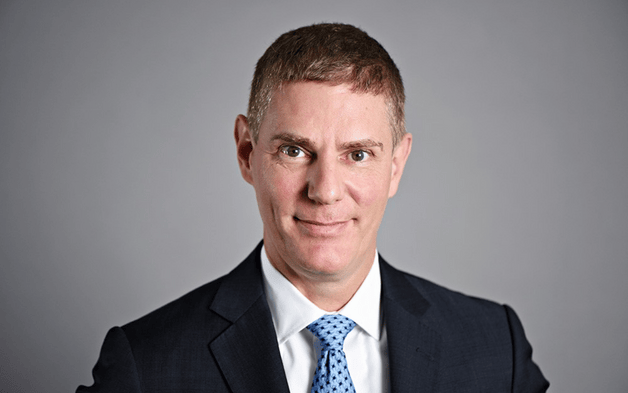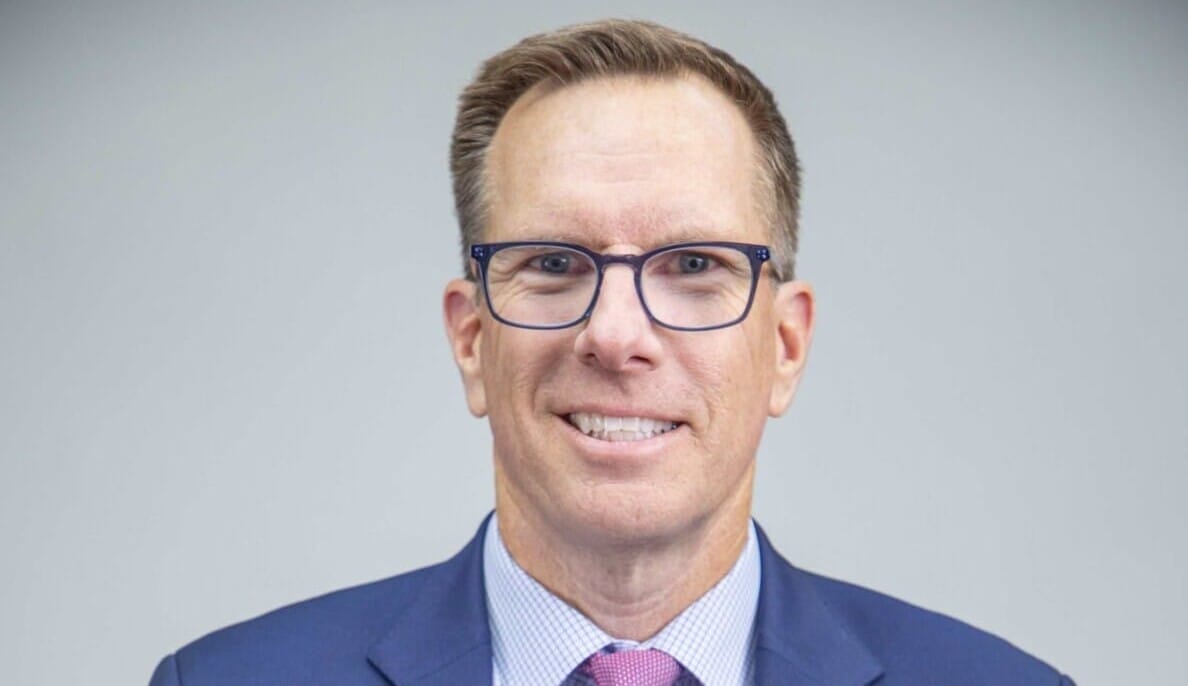As HOOPP chief investment officer Michael Wissell celebrates one year in the job Amanda White spoke to him about the sources of return for the fund’s excellent performance, it’s world-leading funded status, the evolution of the investment allocations and the fund’s biggest sources of risk.
The headline facts about HOOPP’s performance since Michael Wissell became CIO include a return of 11.28 per cent for the year to March and a 120 per cent funded status.
Behind the headlines Wissell and the team have been hard at work building the risk function and rolling out Aladdin, dynamically adjusting the portfolio to market conditions which included a doubling of the real estate commitments on the previous year, furiously building out the infrastructure team and making a commitment to be net zero.
The C$114.4 billion plan for Ontario’s healthcare workers keeps a keen eye on its liabilities managing its investment in two distinct portfolios: a liability-hedging portfolio and a return-seeking portfolio. It’s this liability-driven approach which means the funded status is roaring and the returns are good despite the volatile environment.
“This is the nuance,” Wissell told Top1000funds.com in an in-person interview in the fund’s Toronto office. “We are in the pension delivery business not in the money management business. We live and breathe that here and it’s been that way for 10-15 years, that is our focus. Our liabilities are our biggest risk and protecting ourselves against those growing is our biggest priority.”
Real estate and fixed income make up the liability hedging portfolio while the return seeking portfolio is made up of equities, private equity, corporate credit, short term money market and foreign exchange, infrastructure and other return seeking strategies. The fund also uses derivatives to manage risk.
Traditionally a liability-driven approach means a high allocation to bonds, but HOOPP sold off a lot of bonds in the past couple of years and is slowing building back.
“We focus on the risks, by doing that you end up having good market calls. We are not sitting here saying we think stocks will go up by x per cent. It’s the risks we focus on: are they riskier than they were before?”
Wissell says during the period of extraordinary low rates the fund reduced bond holdings but he now thinks the efficacy of bonds is coming back.
“We want to get paid for the risks we are taking and when something is unduly expensive or risky we will do less of it, you have to be able to adjust to the forward risk profile you are facing,” he says. “As rates came up in the second half of 2022 we have been buying some of our bonds back. We are not forecasting bonds but we think the value as a liability hedge has returned. We look at market prices for indicators, on the inflation front we have some reasons to be more optimistic than what we have been.”
Wissell says it is important to be able to adjust allocations to the changing environment.
“Ideally our allocations wouldn’t be so dynamic but it’s just that the environment has changed so much. The portfolio I have today feels like the right one. But if there is an exogeneous shock or if something really happens then we can take advantage of that or we might want to protect against it. I don’t consider our approach dynamic I consider the world we live in dynamic.”
Asset classes under focus
In the past year the fund has made a net zero commitment and carved out 1 per cent of its equities portfolio to be dedicated to climate-sensitive equities.
The fund has allocated 50 basis points into two different strategies labelled enabling and optimising.
The enabling portfolio invests in technologies that help with the decarbonisation of the system or companies that are using those technologies; and the optimising portfolio invests in existing companies doing a good job in transitioning.
“They are outperforming the broader equities portfolio and we are really pleased with how things are going so far,” Wissell says. “We made a net zero commitment this year which I am very happy about and we are literally in real time engaging internally and thinking about our near-term targets and how to align against those.”
For a large Canadian fund, HOOPP was relatively late to infrastructure, first investing in 2019.
It has now deployed more than $4 billion in the asset class – with a focus on digital and communications infrastructure, transportation and utilities – and Wissell says the allocation is well ahead of its 2 per cent policy portfolio allocation.
“Even though we have 425,000 members our plan is younger than many and we only got the AUM to broad thresholds recently. As the AUM grew we felt we could get the infrastructure program under way, that has worked well and we are head of our plan.”
The focus is on being a good partner, and with a “considerable amount of dry powder” Wissell believes HOOPP to be a partner of choice in infrastructure.
“We are an extraordinarily strong partner. Our approach is not to lead a globally large transaction. We want to partner and be quick to a no or yes and come in alongside the bigger plans and GPs, and that’s working well.”
Infrastructure delivered very strong performance in 2021, generating a return of 14.2 per cent for the year, compared to 7.3 per cent in 2020.
HOOP’s hefty allocation to real estate, 20 per cent of the total portfolio, has also been a great contributor for the fund with a return of 12.5 per cent on a currency hedged basis and a well-diversified portfolio.
“I believe we have the most diversified real estate portfolio that I am aware of, across multiple sectors,” Wissell says. “We don’t have a real estate platform company likes some of our peer plans do, but the upside of that is it gives us incredible flexibility with portfolio construction so we can alter the portfolio or can move into niche areas more nimbly. That diversification has really continued to pay dividends.”
The increase in private assets has also been a key contributor to the investment team growing by 100 per cent in the past four years.
“As we have grown those allocations have had to grow the teams, to make sure it’s done in a proper and robust way. It takes more humans to run a large allocation to private assets.”
Wissell says the fund continues to look at expanding its investments including to private credit and an ongoing investigation into inflation-sensitive assets.
HOOPP doesn’t have a formal allocation to private credit but does invest through private equity and public credit allocations.
“Private credit has been an incredibly successful asset class and we will bring those investments together in a more formalised way going forward.”
The fund has weathered the recent inflationary period very well but inflation-sensitive assets is something it continues to investigate.
“There are pros and cons to all of these choices, we’ve come through it alright so should we have more inflationary sensitive assets? This is something worthy of ongoing consideration.”
Focus on risk management
Wissell who joined HOOPP in 2018 and was previously senior vice president, capital markets and total portfolio, says organisations that have a strong risk culture are better able to manage their way through this extraordinary environments.
Four years ago HOOPP didn’t have a risk team the same way some of the other Canadian funds had. Before HOOPP Wissell spent nearly 17 years at Ontario Teachers.
HOOPP started implementing Aladdin a couple of years ago and that came online in the past year.
“This gives us a whole broad suite of risk analytics across all of our assets which is compelling. That is new for HOOPP,” he says.
The fund had historically relied on just doing asset shocks and draw down risk analytics and now that has been augmented with a full suite of analytic capabilities from Aladdin that sit on the investment team’s desktops.
“You can measure the success of that by the quality of the conversations you have when discussing the individual portfolios. A risk system doesn’t solve the problem of making good investments, that is still the driver where we get paid for the risks. But when you want to consider the aggregation of those investments that is where it becomes a useful tool. People are having portfolio construction conversations in different ways than they did before because they have more insight, these analytics are really powerful.”
The system gives the team a view of aggregated risks which is useful for the current environment where it is important to have line of sight across risks that might impact the whole portfolio.
“This is where this system is a really powerful, every asset at the fund is inside the tool. This is a big thing in terms of managing the portfolio you don’t want to get blindsided in aggregate,” he says.
A prolonged recession is Wissell’s “greatest fear”.
“That’s not our forecast or what we think will happen right now we are little more optimistic than we were a year ago, but deep prolonged recessions are the thing I worry about the most.”
He says the pension industry generally is long growth and risk assets which means it is most exposed to deep long recessions.
“We all have a lot of growth assets. That’s why we are adding back some of those bonds we sold to protect us against that. We are not forecasting a deep recession but you should protect yourself against the things you are most worried about. We still have a long way to go before we are back to the pre COVID days on bond allocation but no one is sending me an email saying ‘this is the high’. This is what I really love about the Canadian pension industry it is rooted in humility among the people that run the plans. We are humble in our ability to forecast the future.”


